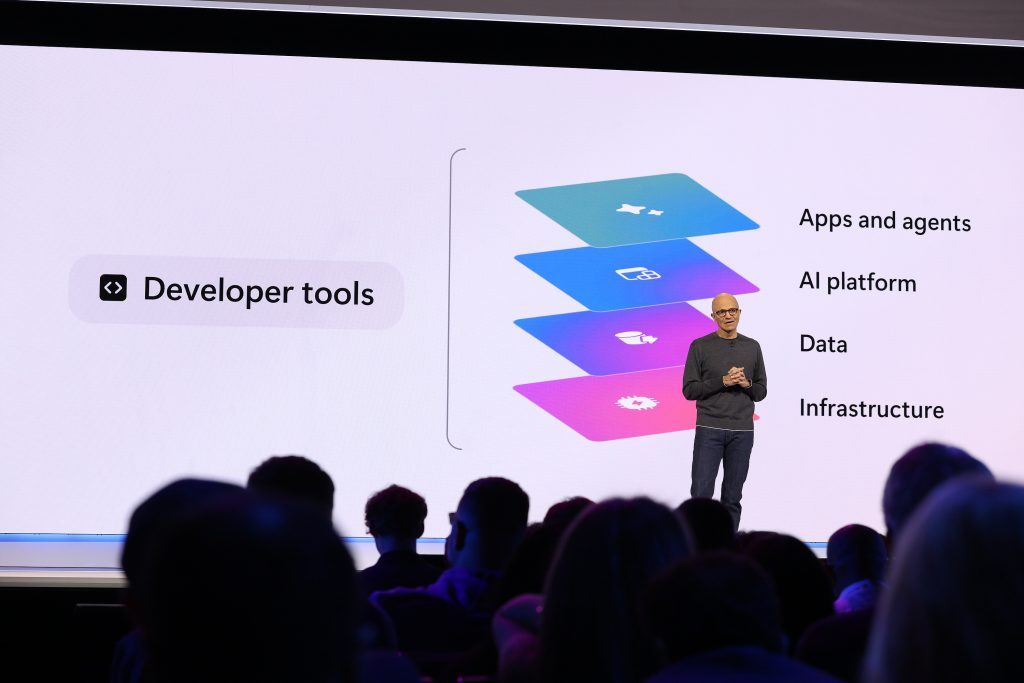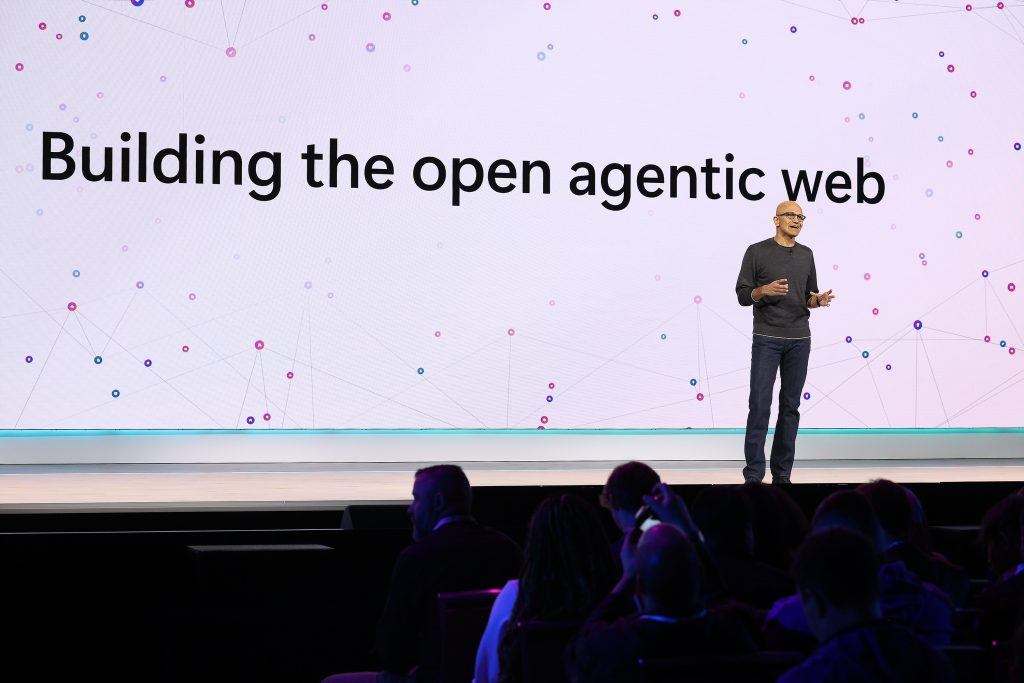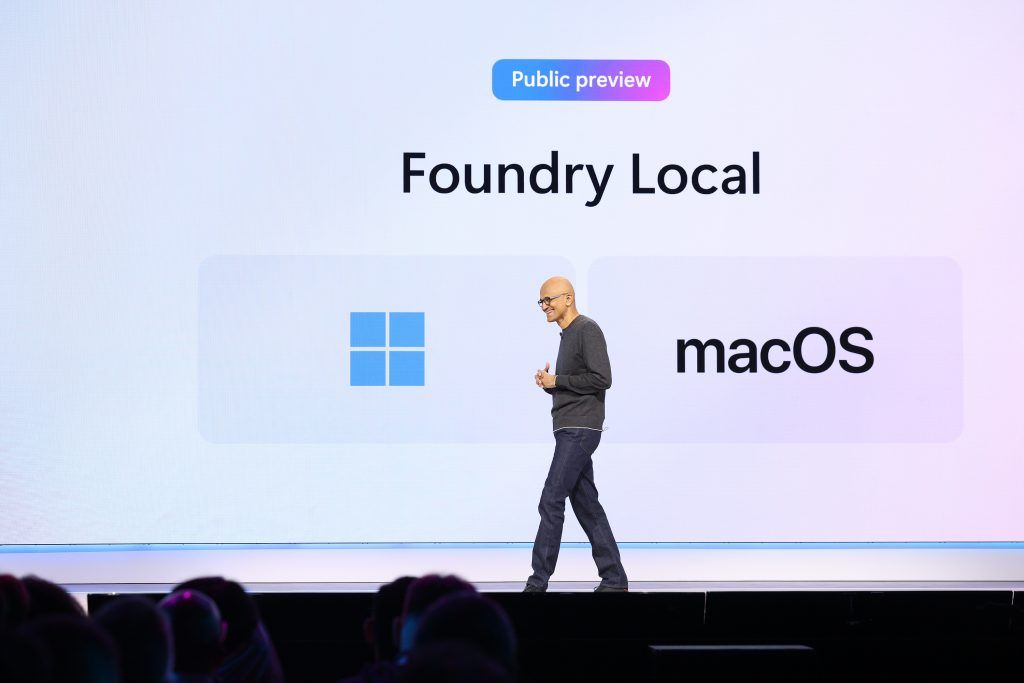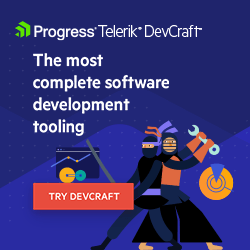What Microsoft Announced at Build 2025

Get a recap of the most important announcements coming out of Microsoft Build 2025.
A few days ago, the Build 2025 conference wrapped up—one of Microsoft’s most important events where the company announces new products and services. This year’s event was packed with significant announcements, primarily centered around four categories: Apps and Agents, AI Platform, Data and Infrastructure. Let’s review these announcements in this post.

Apps and Agents
Within this category, several products were launched with a strong focus on the use of autonomous agents, as well as tools and models for developers aimed at building independent agents to handle everyday tasks.
Enhancements in the Visual Studio Family
The Visual Studio Family is Microsoft’s suite of developer tools. Several new features were announced for VS 2022, including support for preview versions of .NET 10, Live Preview and design-time improvements, enhancements to Git tools, a new debugger for cross-platform apps and a switch to a monthly cadence for stable releases.

Regarding VS Code, Microsoft announced that AI features, including the new Agent mode, will be integrated into the same repository as VS Code itself. With each new release of VS Code, GitHub Copilot has evolved from being a programming partner that continuously required user intervention to a team member capable of taking on issues, fixing bugs, implementing new features and maintaining code. Best of all, anyone can use it. This behavior reflects Microsoft’s new vision called Open Agentic Web, marking a new era where agents can make decisions and perform tasks for users and organizations.
Azure SRE Agent
A new agent called SRE Agent was introduced, focused on incident resolution. It can integrate with alert systems, gather information and react to resolve issues as quickly as possible. This is achieved by training a model with organizational documentation and information, enabling the creation of detailed tickets that reduce Mean Time of Repair.
Microsoft 365 Copilot General Availability
One of the most prominent announcements of the event was the general availability of Microsoft 365 Copilot for all subscribers. Microsoft highlighted that, with its release, a unified experience called the “UI for AI” has been created, intuitively integrating functionalities such as chat, search, notebooks and agents. Notably, organizations and users can utilize their own information as the context foundation for Copilot’s functionality.
Copilot Studio
As for Copilot Studio, its capabilities have been expanded, allowing users to design and create their own agents, including MCP agent flows. New features like the Microsoft 365 Agents Toolkit for VS, Microsoft 365 Agents SDK, Microsoft 365 Copilot APIs and the Agent Store, among others, were announced. Support for multi-agent orchestrations was another highlight, enabling multiple agents to work together to build more complex experiences, including computer usage tasks.
Copilot Tuning
This new functionality in Copilot Studio allows the creation of high-level enterprise agents by fine-tuning LLM models based on the data, workflows and styles unique to each company. For example, a law firm could develop a Copilot that reasons over its proprietary legal documents.
AI Platform
This series of announcements focused on AI models, tools and services that help developers create agent-based applications.
Model Router for Azure OpenAI Models
The Azure Foundry service currently supports more than 11,000 AI models, with the list set to expand over time. Model Router enables users to automatically select the best model for executing a specific task, optimizing costs by using less expensive models for simpler tasks and more powerful ones for tasks requiring reasoning.
Grok Integration in Azure Foundry
The integration of Grok models into the Foundry AI model offerings was announced, providing users with additional options for AI-powered applications.
Foundry Agent Service—General Availability
The Foundry Agent Service was announced with general availability. This is a comprehensive platform that makes it easy to create, deploy and scale AI agents using SDKs for Python and C# with just a few lines of code.
Additionally, multiple Azure services were updated to support agent deployment, including Azure Container Apps, Azure Functions and Azure Kubernetes Services.
Microsoft Entra Agent ID
For enhanced security, agents created in Foundry and Copilot Studio will now have an identity managed through Entra, allowing for secure permission handling during agent deployment.
Pureview Integration with Foundry
It was also announced that agent-utilized data is now protected through the new integration with Pureview, which enables easy discovery of compliance and security risks, better safeguarding them against data leaks.
Defender Integration with Foundry
Defender now integrates with Foundry to protect endpoints by providing alerts and recommendations, as well as identifying security vulnerabilities.
Foundry Local
The launch of the Foundry Local service was announced, featuring models, a runtime, agents-as-a-service and a CLI for local app development, supported on Windows and Mac. This includes Windows AI Foundry (a platform focused on creating AI-based apps for Windows devices), as well as native MCP support on Windows.

WSL is Now Open Source
One particularly exciting announcement was that the Windows Subsystem for Linux has transitioned from being a private project to becoming an open-source community initiative.
Data-Focused Announcements
The third set of announcements at Build 2025 pertained to Data. This includes everything from the preview of SQL Server 2025 to the integration of AI into data query tools.
SQL Server 2025 (Preview)
The first announcement in this category revealed that SQL Server 2025 is now in Public Preview.
Cosmos DB Integration in Foundry
Another announcement is the new integration of Cosmos DB into Foundry, enabling agents within Foundry to utilize Cosmos DB for storage purposes.
Azure Databricks Connection with Foundry
Data processed in Azure Databricks can now flow directly into Foundry, enabling advanced analytics.
LLM Integration in PostgreSQL Queries
A new feature allows the invocation of an LLM for generating responses based on natural language requests and SQL statements, with the database engine intelligently orchestrating the query plan.
Cosmos DB Integration in Microsoft Fabric
Fabric now supports both structured (SQL) and semi-structured data in a unified layer for AI applications.
Digital Twin Builder Integrated into Fabric
Fabric now includes a Digital Twin Builder with minimal code, allowing users to map data from physical assets and systems into a digital model within the platform.
AI-Powered ETL
Prebuilt transformations are now applied directly to incoming data, powered by Foundry and executed in Fabric, thereby automating ETL tasks with AI.
Copilot in Power BI
Now, it is possible to generate reports, data visualizations and question answers directly from Power BI, thanks to the new Copilot within the platform.
Infrastructure
This series of announcements was more focused on what Microsoft is doing to provide the best AI service to its customers. MS announced that system software and model optimizations are underway, as well as the deployment of these improvements in their data centers to achieve the ultimate goal of maximizing tokens per watt per dollar.
Similarly, Microsoft announced that there are more than 70 regions available, within which 10 new data centers have been opened in the last three months.
Microsoft is the first company to bring the GB200 GPU online in large volumes, enabling industry-leading performance by generating up to 865,000 tokens per second. To achieve this, Sidekick, a unit designed for AI that supports GB200 GPUs and consumes zero water, has been used, allowing high power density without traditional cooling systems.
Another interesting fact mentioned is the 400 Tbps backbone network that interconnects data centers optimized for AI.
Conclusion
In this post, I have shared the most important announcements that have taken place at Build 2025. If you want to delve deeper into any of these topics, I encourage you to visit the official Build 2025 page, where you will find recordings of the main talks available on demand.

Héctor Pérez
Héctor Pérez is a Microsoft MVP with more than 10 years of experience in software development. He is an independent consultant, working with business and government clients to achieve their goals. Additionally, he is an author of books and an instructor at El Camino Dev and Devs School.

